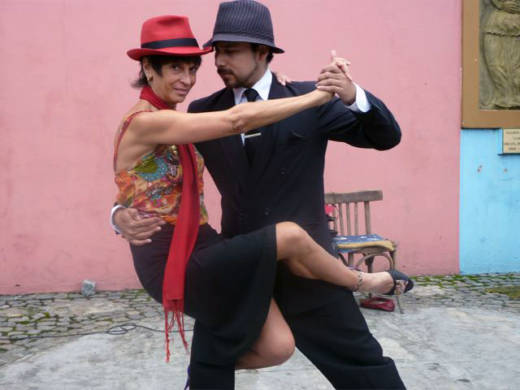People with neurological disorders have problems with balance and muscle control. So what happens when Camille Cusumano tries to teach them one of the most fluid of all dances?
I embrace Alice to lead her in the dance that takes two. Her hand trembles. The music begins and I lead Alice in a tango step called a molinete, or windmill, a circular grapevine. Alice, who suffers from Parkinson’s, not only stops trembling, her feet move as if airborne. “Beautiful, Alice, soooo fluid!” I exclaim. I’ve seen less coordination in students not afflicted.
Just over a year ago, my co-instructor, Bob Noakes, and I were hired by Stanford’s Neuroscience Center to teach tango to Parkinson’s sufferers. Knowing that Argentines say “It takes a lifetime and a half” to learn tango, I was apprehensive for our balance-challenged students. I knew choreographer Mark Morris had shown how dance benefits stiff limbs and tremors, spreading the joy of dance to many. University researchers had shown tango’s benefits to Parkinson’s and Alzheimer’s.
From the start, Bob and I found the reward of sharing a passion for tango was ours. We’ve seen a core group of students progress through tango’s basics. On the dance floor, with grace and elegance, their feet trace ochos or figure eights. They slide their ankles to the delicate cross, the sensual cruzada and like Alice, float through the grapevine.
Our students still deal with challenges but say this tango class is the highlight of their week. We say it is for us, too. I’m reminded of the song that advises “spread joy up to the maximum, bring gloom down to the minimum.” Before I was swept up by tango passion during a gloomy period, I never would have thought this was one gratifying way to do that.
